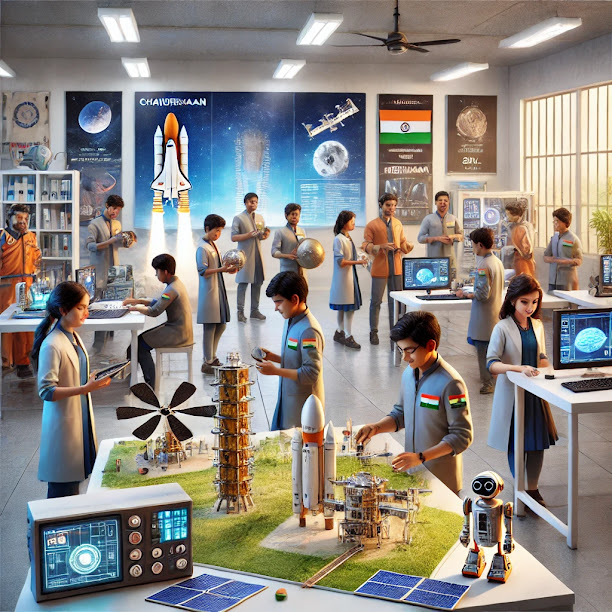Introduction
In a remarkable development for educational innovation, the Bilaspur district administration is introducing space labs in six senior secondary schools to inspire the next generation of scientists and engineers. This initiative aims to enhance students' interest in space science, bridging the educational divide between urban and rural areas. By providing hands-on learning experiences, the program seeks to cultivate a scientific mindset among young learners, setting the stage for a brighter, more technologically advanced future. The focus on practical engagement with concepts related to space exploration promises to ignite curiosity and foster a love for science among students, empowering them to dream big and explore their potential.
Establishment of Space Labs
The newly introduced space labs are designed to engage students with hands-on experiments and projects related to space science, inspired by the missions of the Indian Space Research Organisation (ISRO). The initiative not only seeks to enhance students' understanding of satellite missions such as GSAT launches but also highlights their applications and significance in our daily lives.
Locations and Funding
The first space lab has already been inaugurated at a government school in Ghumarwin, with five additional labs currently under construction across various schools in Bilaspur, Namhol, Barthin, Kapahra, and Dangar. Deputy Commissioner Abid Hussain Sadiq revealed that these labs are being funded through HDFC Bank's Corporate Social Responsibility (CSR) initiative, costing around Rs 12 lakh each, with an overall investment of Rs 75 lakh allocated for the project.
Key Features of the Space Labs
Focus on ISRO Missions
The second lab, located at Government Senior Secondary School (GSSS) for boys in Bilaspur, is on the verge of completion and is set to be inaugurated by Technical Education Minister Rajesh Dharmani on January 7. These labs will feature models representing prominent ISRO missions, including Chandrayaan, Mangalyaan, the Polar Satellite Launch Vehicle (PSLV), and the upcoming Aditya Mission. This setup will provide students with a comprehensive understanding of space exploration.
Integration of Emerging Technologies
Furthermore, the labs will delve into emerging technologies such as robotics, 3D printing, and artificial intelligence, ensuring that students not only grasp theoretical knowledge but also apply it practically.
Educational Gaps
Bridging Educational Gaps
Establishing space labs in rural areas provides a crucial opportunity for students. This initiative will promote scientific outlook, equality in education, and technical skills development.
Student Engagement and Learning Opportunities
To complement the space labs, ten selected students from the district recently had the opportunity to visit ISRO’s Space Applications Centre in Ahmedabad, enriching their learning experience. Plans are already in motion to facilitate similar educational trips for an additional 50 students, aiming to ignite a passion for space science and technology among the youth.
Conclusion
This revolutionary approach to education goes beyond the traditional classroom setting, paving the way for innovative learning experiences. By encouraging students to explore the realms of science and technology, these space labs are expected to inspire future generations to pursue careers in STEM (Science, Technology, Engineering, and Mathematics) fields.
In essence, the establishment of space labs in Bilaspur signifies a remarkable milestone in educational innovation and serves as a beacon of hope and inspiration for students in both urban and rural settings. With this initiative, the district administration is pioneering a new era of learning that promises to cultivate scientific minds and propel technological advancement in the region.




Post a Comment